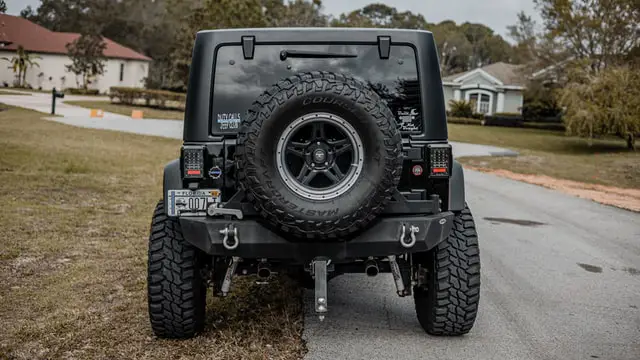What Does the Vacuum Pump Do on a Jeep Wrangler

The brake booster vacuum pump eliminates the need for the engine to provide suction and can operate independently. An electrical control circuit is used to operate this device. It is triggered by a signal from the brake booster vacuum sensor, which checks the brake booster’s vacuum levels.
What does a bad vacuum pump do?
When a pump starts to fail, it produces less suction, which serves to deliver pressure to the brake master cylinder and adds pressure to the brake lines. The lack of brake pressure eventually reaches the pedal.
What does the vacuum pump do?
The main purpose of a vacuum pump is to modify the pressure in a contained region in order to achieve a full or partial vacuum via mechanical or chemical means. As gas molecules flow from high to low to fill the full area of that volume, pressure will attempt to equalize across connected regions.
Do jeeps have vacuum brakes?
Mine will use a cable connected to the slider on the trailer ball on the motor home to operate the brake pedal in the jeep. It will also be devoid of a vacuum. Keep in mind that even if all of the vacuum has been expended, you still have brakes, however stopping a car without the engine running is much more difficult.
How do you remove the vacuum pump on a Jeep JK?
The most common solution is to move the pump into the engine area, close to the Jeep’s computer. Do not be shocked if the vacuum pump runs a few of times after releasing the brake pedal on each cold start after it has been relocated inside the engine compartment. It’s quite noisy, which is likely why it’s in such a remote spot. You’ll just have to get used to the loudness as part of the cost of personalizing your gear.
How do you relocate a JK vacuum pump?
The vacuum pump is mounted on the inside of the driver’s side frame rail, directly behind the bumper, on Jeep JK models.When braking in an emergency, the vacuum pump provides more power. It’s part of the BAS/PBSsystem, which is standard on all 3.6L Chrysler automobiles.If you decide to upgrade your Jeep’s front bumper, keep in mind that the vacuum pump may need to be relocated.Only aftermarket bumpers that have a recessed winch plate between the frame rails require relocation. Non-winch bumpers and top fairlead mount bumpers, which have the winch on top of the bumper, do not require relocation. The vacuum pump bracket, which is attached to the frame rail, must be removed to allow the winch plate to fit on bumpers where the winch is mounted on a winch plate positioned between frame rails.
Procedure
- Before you begin the project, gather your tools and make everything ready. I recommend removing your Jeep’s grill, top plastic bumper cover, and bumper itself in order to have easier access to the vacuum pump, its wiring, and the bracket it’s linked to. The grill should be removed first.Remove the six plastic clips from the grill top and unplug both turn signals. Pull each clip out by lifting the centre core with a flathead screwdriver. Pull on the bottom of the grill from one side to free the push-in clamps that hold the grill to the Jeep’s body
- Taking the vacuum pump out of the bracket is the first step. Remove the pump’s big vacuum pipe and little exhaust hose. The little hose is easily removed by sliding it out of the way. Remove the green retainer clip from the quick disconnect using a tiny screwdriver to release the huge vacuum line. The connector will easily slide off the pump as a result. To liberate the pump, disconnect the electrical harness and set it aside.
- Cut the wires around two inches from the plug by peeling portion of the factory wire loom open. In the engine bay, locate the vacuum pump line. Begin removing the clips and zip ties that have been securing the vacuum pump line. Remove the retention clasp that secures the vacuum pump hose below the washer fluid bottle or cut it.
- Remove the coupler from the engine’s hose. If you’re having difficulties removing it, cut the hose cleanly behind the coupler. To remove the vacuum pump hoses from the Jeep, pull them together and down toward the ground. The vast majority of it will remain unused. Quickly disconnect the vacuum pump line by separating the check valve.
- Attach the vacuum pump to your new aftermarket bracket and place it close to the upper fender bolts, where it will be used. Mark and drill two 7/32-inch holes in the plastic ABS cover with the two tree clips from the wiring harness as a template. The plug should not yet be inserted into the holes. 4 feet of 18-gauge wire, measured and cut, to be inserted into the wire loom Next to the washer fluid bottle, run the wires down the fender well. Make sure the wire loom does not wrap around any working elements.
- Connect the new “extension” wires to the vacuum pump’s original wiring. Colors are important. Connect the red and green wires, as well as the black wires. Heat shrink butt connectors are used to join the wires that have been stripped back. To ensure a watertight connection, crimp and heat the connectors. Pull the loom over the connectors, and if required, reinforce with electrical tape. Reattach the electrical harness and insert it through the two holes in the plastic cover. Replace the green retainer clip and push the vacuum pump line quick disconnect into the pump.
Why does JK brakes have vacuum pump?
When braking in an emergency, the vacuum pump provides more power. It’s part of the BAS/PBS (Brake Assist System/Panic Braking System) system, which is standard on all 3.6L Chrysler automobiles.
